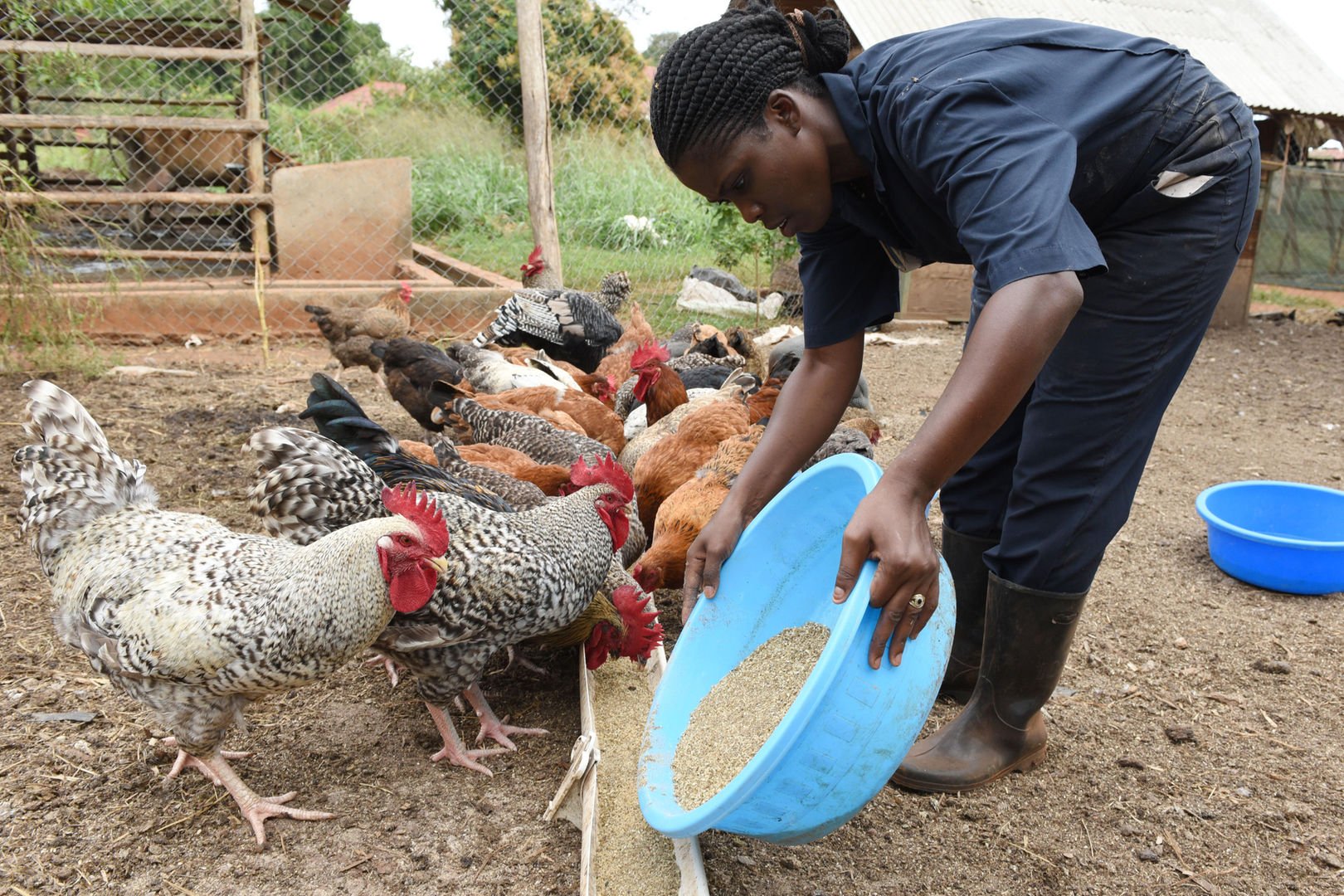Prime
Bigger opportunities for agriculture as oil sector takes shape

Dr Emma Naluyima feeds her chicken. Photo/File
What you need to know:
- Beyond supporting farmers, the oil and gas industry is expected to steer fertilizer production for the agriculture sector using ammonium – this will further boost agriculture production and productivity and result in mega opportunities for investors.
Investments in the agriculture sector are expected to yield significant returns as the development phase of the oil and gas sector continues to take shape, experts in this field said in separate interviews.
Elly Karuhanga, a trustee on the Uganda Chamber of Mines and Petroleum Board said oil companies and their suppliers are expanding operations in line with the growing demand for oil sector activities, and that comes with demand for food.
Agriculture sector growing
“No doubt the agriculture sector is going to thrive,” he said, “You cannot work on an empty stomach, and above all Uganda’s population is expanding every day,” he added.
Uganda expects first oil in 2025. Currently, 11 oil wells have been drilled at Tilenga and Kingfisher oil fields as the government embarks on the construction of the East African Crude Oil Pipeline that runs 1,443km from Kabaale, Hoima district in Uganda to the Chongoleani Peninsula near Tanga Port in Tanzania that will export crude oil. An estimated $20bn is expected to be invested in the current development phase of Uganda’s oil and gas sector.
Standards
Karuhanga, who has been at the front of Uganda’s oil journey, says Ugandans who are ready to benefit from this huge investment must be ready to meet the required standards and quantities to be able to benefit from the sector.
One way of doing this, he said is by embracing joint venture partners to be able to meet the required capital investments in the sector.
“Our interest has always been one; local content---and how to achieve it for Ugandans to benefit from their oil resource,” says Karuhanga.
Agriculture plays a pivotal role in Uganda, employing in excess of 70 percent of the population, contributing nearly 30 percent of export earnings, and constituting about 24 percent of the GDP.
According to the Petroleum Authority of Uganda data, the oil and gas sector is expected to employ around 14,000 people directly by the companies, while about 45,000 people will be indirectly employed by the contractors.
An additional 105,000 people will benefit from induced employment based on the utilisation of other services by the oil and gas sector.
Of the direct employment, 57 percent are expected to be Ugandans, which is expected to result in an estimated $48.5m annual payment to Ugandan employees.
Irene Bateebe, the Permanent Secretary at the Ministry of Energy and Mineral Development said in a television interview that the investment in the sector means there is a big opportunity for investors in the agriculture sector.
Eng Bateebe said the government of Uganda is cautious about investing revenues from the oil and gas sector in critical areas including infrastructure, and energy which directly support the growth of other sectors like agriculture.
Investment
She added that the government is aware of the fact that failure to invest in other sectors such as agriculture alongside oil and gas could result in a crisis or what many call the Dutch Disease.
Eng., Bateebe urged private sector players to take advantage of government policy interventions in the agriculture sector like the Parish Development Model and tax exemptions on agriculture inputs to be able to invest heavily in the sector and reap benefits.
Quality
Tony Otoa, the Chief Executive of SBIL says the need for supply of quality food in the oil and gas sector is crucial and therefore farmers need to be prepared and equipped with the necessary skills and knowledge on how to supply the sector.
He says the farmers need to be organized and registered, trained in corporate governance aspects of running successful enterprises.




